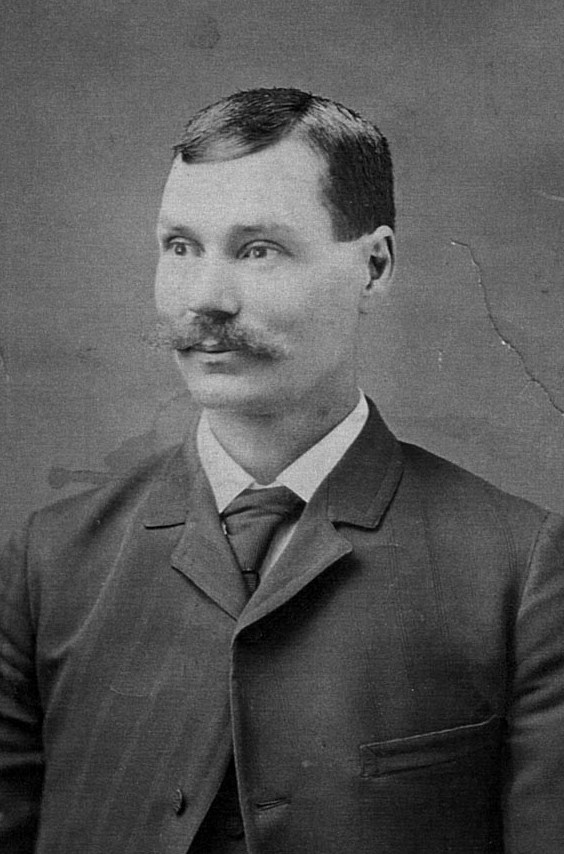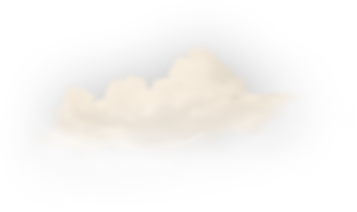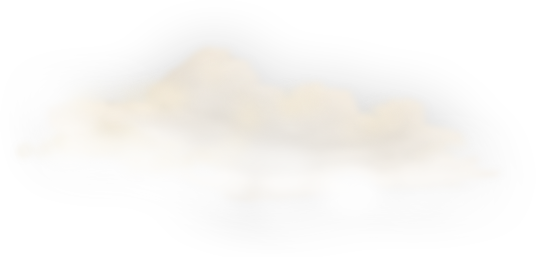Thompson, Peter
Place of Birth: Markinch, Fife
Date of enlistment: 21 September 1875
Age given at enlistment: 21
Rank: Private
Company: C
Location on 25 June 1876: Dropped out of Custer's column - in the hilltop fight
A Hero from the Kingdom of Fife
- Probably more words have been written by and about Peter Thompson than any other enlisted man who fought in the Battle of the Little Big Horn, yet surprisingly little has been published about his life prior to enlistment in the United States Army. For many years I had wondered why someone from Scotland should have such a distinctly ‘English’ surname and, also, why is there no record of him being born in Markinch, in the ‘Kingdom of Fife,’ on 28 December 1854. A close examination of the Register of Baptisms for the parish of Markinch revealed that the original family surname was not ‘Thompson,’ as I had suspected, but its Scottish equivalent, ‘Thomson,’ which is entirely logical. The same records also confirmed that Peter Thomson was born on 1 September 1853, that is, almost 16 months earlier than the date shown on not one but two monuments in West Lead (pronounce ‘Leed’) Cemetery, Lawrence County, South Dakota, and universally perpetuated in printed works, muster rolls and LBH-related websites. At the time of writing I cannot offer a plausible explanation for the discrepancy in these dates: on the contrary, to muddy the water still further, Thompson himself stated “…I was born December 28, 1853,”1 while the Census of Markinch (7 April 1861) lists him as “a scholar – age 8,” which clearly points to an earlier year of birth, if not a specific day and month.

Markinch, an eastern suburb of Glenrothes, 'The Kingdom of Fife.'
- Further study of parish registers, census returns and cemetery records, combined with a lengthy process of elimination, identified John Thomson, born 23 July 1826 in the nearby market town of Cupar, as the mostly likely to be Peter’s father. However, civil registration of births, deaths and marriages did not come into force in Scotland until 1 January 1855, and therefore one must be especially careful when quoting information recorded prior to that date although, in this instance, I am reasonably confident that my findings are factually correct.
- John Thomson came to Markinch during his early teens when his father, also John, found employment as a linen handloom weaver in the newly-erected Balbirnie Wool Mill. As was a widespread practice during this period the Thomsons would have made regular forays into the surrounding hills to snare rabbits and catch wild game to supplement their staple diet of oatmeal and potatoes. It was during one of these trips that the younger John is said to have met his future wife, Agnes Craigie, who came originally from Edinburgh. They were married in Markinch Parish Church on 27 October 1849 by the Rev. George Pittendreigh, who received the modest fee of two shillings (10p) for his services.1
- The newly-weds set up home at Stobbs Cross before moving to Ward Knowe, a more central area of the village. Agnes was almost certainly daughter of Peter Craigie and Janet Gardner and, if so, faithfully followed the customary Scottish naming pattern by calling her second son, Peter, after his maternal grandfather.2 The names of Peter’s three eldest siblings, John (born 30 September 1851); Janet (born 20 November 1855 – died 1 January 1856); and James (born 31 January 1857), also strictly conform to the same convention, which provides compelling circumstantial evidence in support of my claim to have identified the right ancestry of the future cavalryman. John and Agnes were to have three more children while still residing in Markinch, namely, Robert (born 28 May 1859); William (born 18 July 1861); and Auchterlony (born 3 September 1863).
- Despite being gainfully employed as a farm labourer, gamekeeper and paper mill worker, Peter’s father could not escape the ever-present threat of poverty and, in 1865, the prospect of a better life in America for himself, his wife and their six children, finally convinced him to leave his beloved Scotland. It is most likely that the family sailed from the English port of Liverpool where their surname may have been anglicised to Thompson but equally this could have occurred on entry to the United States.
- The Thompsons settled in Banksville, part of Union Township, Allegheny County, Pennsylvania, which was annexed by the city of Pittsburgh in 1928, and where Peter, brother John, and their father all worked as coalminers down a local pit.3 It was in Banksville that two further children, Agnes and Thomas, were born. During the early 1870s John Thompson Snr4 purchased a farm in Burrell Township, Indiana County, some 45 miles due east of Pittsburgh; a decision that plainly did not meet with the approval of the whole family. Peter, for one, took an instant dislike to this type of work and was anxious to get away from it as soon as he could. Fortunately, an opportunity presented itself in September 1875 when he was in Pittsburgh visiting some friends who had recently arrived from Scotland and, on the twenty-first day of the same month, he enlisted for a period of five years in the United States Army. One month later to the day he joined Company C at Fort Abraham Lincoln, Dakota Territory, headquarters of George Armstrong Custer’s celebrated 7th Cavalry.5
- Peter Thompson is best-known as one of the troopers who controversially dropped out of Custer’s doomed column of five companies on Sunday, 25 June 1876, shortly before the legendary ‘Last Stand.’ It seems his horse became exhausted and not only did the young Scot have the good fortune to avoid capture by the hostile Indians he was also able to safely rejoin other members of the beleaguered regiment entrenched on a distant defensive hilltop site to fight another day.
- By mid-morning on 26 June, the second day of the battle, it was already exceptionally hot, and the wounded were in desperate need of water. The regiment’s senior captain, Frederick W. Benteen, responded by leading a charge west of his position that cleared a path to a gully leading down to the Little Bighorn River, since named Water Carriers’ Ravine. Many men, including Thompson, volunteered to go for water. They took with them iron canteens and camp kettles and made several hazardous trips to the river under heavy fire from the enemy. Several troopers wounded, including Thompson, who sustained injuries to his head and right hand. The hard-won water they brought back undoubtedly saved many lives. As the day wore on the rate of enemy fire noticeably decreased and late in the afternoon the Indians broke camp before moving slowly away from the river in the direction of the Big Horn Mountains – the Battle of the Little Big Horn was finally over. A few days later Thompson, along with 50 or so other wounded men, was taken to Fort Abraham Lincoln, near present-day Mandan, North Dakota, on the steamer Far West, to recuperate from his injury before returning to active duty.
- On 5 October 1878 Peter Thompson was awarded the prestigious Medal of Honor. The citation reads:
- “After having voluntarily brought water to the wounded, in which effort he was shot through the head, he made two successful trips for the same purpose, not withstanding remonstrances of his sergeant.”
- Thompson was discharged at Fort Meade, Dakota Territory 20 September 1880, on expiration of service, as a “private of excellent character.” He was to work for 18 years in various capacities for the famous Homestake Mining Company in Lead; become a naturalised citizen of the United States in 1890; marry Ruth Boicourt,6 from Missouri, at Belle Fourche, South Dakota, on 21 September 1904; have at least two children, Susan and Peter; run his own stock farm north of Alzada, Carter County, Montana; attend the 50th anniversary celebration of the battle on 26 June 1926 at the Custer Battlefield National Cemetery; count among the members of General Nelson Miles Camp No.12, National Indian Wars Veterans, Billings, Montana; before dying of aortic insufficiency at Battle Mountain Sanatorium, Hot Springs, South Dakota, 3 December 1928. He was buried the following day with full military honours in Grave 1, Section 9, Masonic Block 9, West Lead Cemetery, where the two fine, if markedly different, monuments we see today have been placed in his memory.

A near-pure commemorative one troy ounce of silver coined by the Homestake Mining Company, South Dakota.

Peter Thompson - A John C. H. Grabill photograph taken ca. 1890.
- Further information about this most unlikely Scottish hero can be found in:
- Magnessen, Daniel O. (Ed), Peter Thompson’s Narrative of the Little Big Horn Campaign 1876, Glendale, Arthur H. Clark Co, 1974.
- Morrison, John, Forgotten Scottish Heroes, John Morrison, self-published, Clydeside Press, Glasgow, 2004. Also includes short biographies of several other members of the 7th U.S. Cavalry with Scottish connections.
- http//www.astonisher.com/archives/museum/peter_thompson_little_big_horn.html
- Williams, Roger L., Military Register of Custer’s Last Command, 2009, incorrectly cites Thompson’s date of birth as 28 December 1856 and his date of death as 4 December 1928.
- Nichols, Ronald, Men With Custer: Biographies of the 7th Cavalry, 2010, states that Thompson had resided in the Battle Mountain Sanitarium “a few years” when, in fact, it was a little over 19 months. Neither Williams nor Nichols tell us that his surname was ‘Thomson’ prior to arriving in the United States.
- Notes & Sources
- 1. Register of Marriages, Markinch Parish, Fife.
- 2.The Scottish naming pattern was: First son named after paternal grandfather, first daughter named after maternal grandmother, second son named after maternal grandfather, second daughter named after paternal grandmother, etc.
- 3. Census taken 3 July 1870, Union Township, Allegheny County, Pennsylvania.
- 4. Agnes Thompson died 19 June 1889. John Thompson died 10 April 1899. Both are buried in Section D, Blairsville Cemetery, Burrell Township, Indiana County, PA.
- 5. Enlisted by Lieutenant Thomas Gregg and described as age 21, having brown eyes, brown hair, a ruddy complexion, being 5’ 8 3/4” tall, and previously employed as a miner.
- 6. Ruth Boicourt, daughter of James Boicourt and Susan Spear, was born on 14 April 1874 [20 years her husband’s junior] in High Hill, Montgomery County, Missouri. She died in Montana in 1951.
- An Obituary
- Hot Springs Weekly Star, Hot Springs, South Dakota, December 11, 1928.
- R. Evans* of Belle Fourche, who came here to accompany the body of his old friend, Peter Thompson, to Lead for burial services, gives some interesting information about Mr. Thompson’s part in the Battle of the Little Big Horn, and his subsequent life. There was a time when Peter Thompson was “under a cloud,” it is said, because the story has been well circulated that no one connected with the battle survived except Comanche, the wounded horse, and Curley, the scout, who slipped out early in the struggle.
- People who see, however, the honorable discharge that the United States government issued to Peter Thompson with the notations there in the handwriting of his officers, will never have any doubt as to Peter Thompson’s connection with the battle and the honorable and heroic part he played.
- From this discharge, we learn that Peter Thompson enlisted in Company C of the 7th U.S. Cavalry on Sept. 21, 1875, for a period of five years. He was then 26 years old and was born in Scotland. His previous occupation was a “miner.”
- He was discharged from Company C, 7th Cavalry, on Sept. 20, 1880, by reason of “expiration of term, and was given the highest rating that is used “Excellent” on character.
- The discharge is signed by Col. S.D. Sturgis, commanding the 7th regiment, and by Captain Henry Jackson, commanding Co C at the time of the discharge.
- A citation on the certificate signed by his officers at the time, states that “this soldier took part in the Battle of the Little big Horn, M.T., June 25, 1876, and was given the Medal of Honor for conspicuous bravery in said battle. He was also engaged in campaigns against the Northern Cheyennes in 1878.” This citation is signed by Capt. Henry Jackson, commanding Company C.
- Mr. Thompson’s own story of the Battle of the Little Big Horn, today, happily is generally accepted as the best account of what actually happened there. It appears as the big chapter in “Black Hills Trails” by Brown and Willard, two Black Hills pioneers. His story was checked over by Walter Camp of Chicago, whose own history of the battle exhausted every source of material on the subject and Camp has declared that Peter Thompson’s story of the battle and his part are undoubtedly true.
- Prior to the battle, the Custer command was making a hard march. Thompson’s horse, and that of another man, Watson, practically played out and although spurred to keep up with the company, they fell behind and engaged the rear guard of the Indians under Sitting Bull.
- He was awarded the Congressional Medal of Honor on August 29, 1877 [5 October 1878], for distinguished gallantry. The citation tells the story: “After having voluntarily brought water for the wounded, in which effort he was shot through the hand, he made two more successful trips for the same purpose, notwithstanding the remonstrances of his sergeant.”
- Thompson himself never tried to reap the honors which might have come to him. Instead, he modestly went into private life, mining and ranching. Mr. Evans, his trusted counselor and banker over many years, is the authority for the statement that Thompson never applied for a pension until some 35 years afterwards, and then only on the urging of Mr. Evans that he owed it to his younger wife and two children to provide for them, if something should happen to him.
- Note (*): David Robert Evans was born in Aberystwyth, Wales, on 23 March 1862. He came to America in 1882 and settled in Dakota Territory, where according a grandson, Robert Hunter (son of Inez Evans by his second wife Myrtle Viola White from southern Illinois), he was a cowboy, rancher, bank cashier and then president (First National Bank of Belle Fourche), Mayor of that city, founder of the Black Hills Roundup (and its president in 1927 when President and Mrs. Coolidge visited1), a founder of the Rodeo Association of America, and South Dakota State Senator (Republican) 1912-14 [1917-18?]. He died on 14 February 1939 and buried in Pine Slope Cemetery, Belle Fourche, Block D, Lot 10, Grave #4. Myrtle White Evans died in 1960 and lies buried near her husband.




















